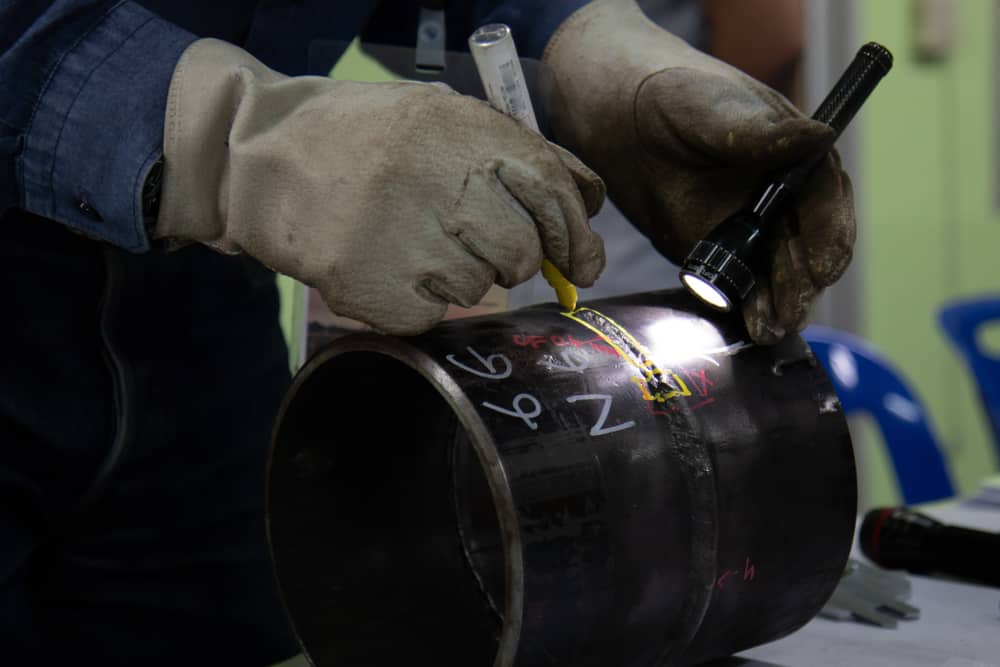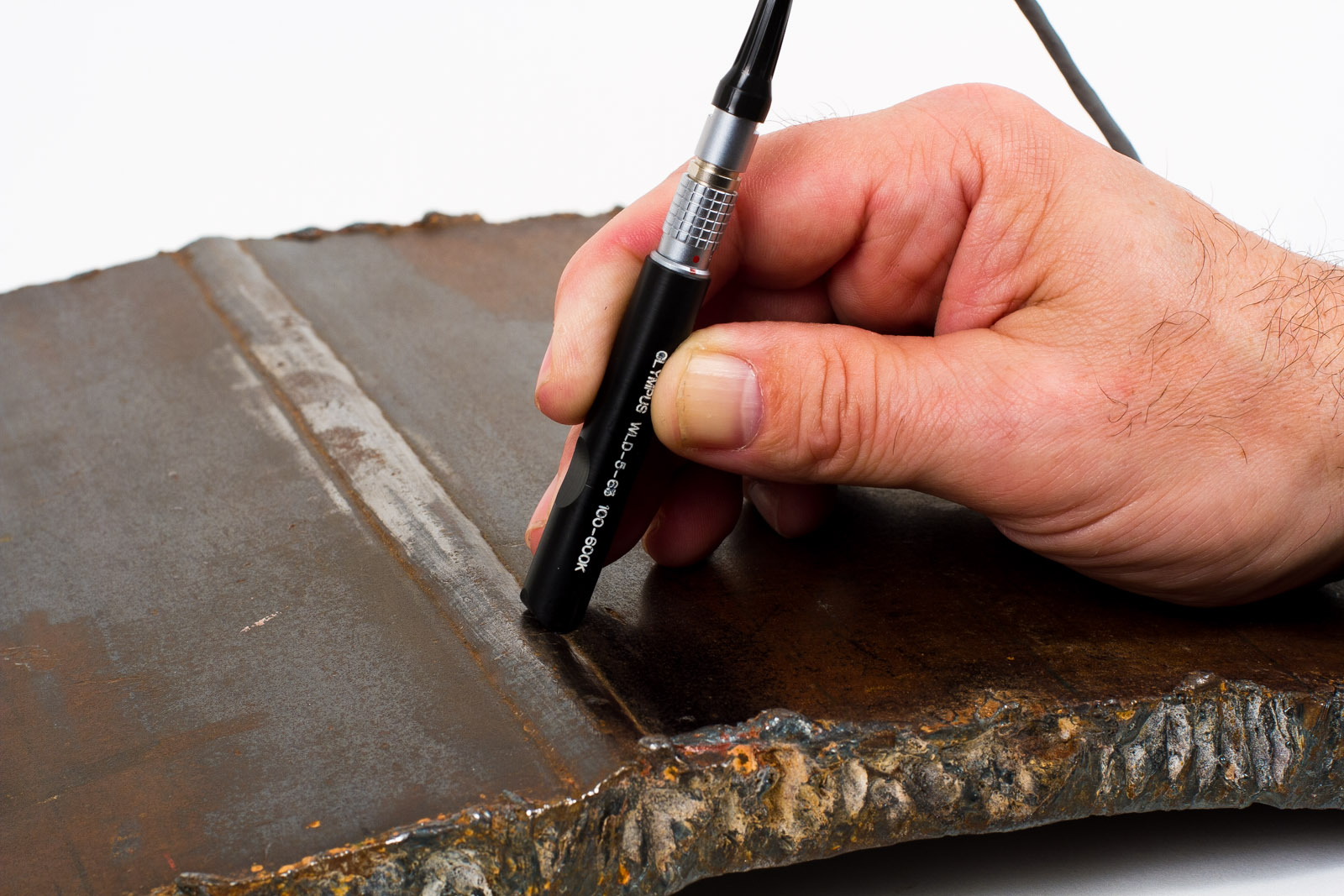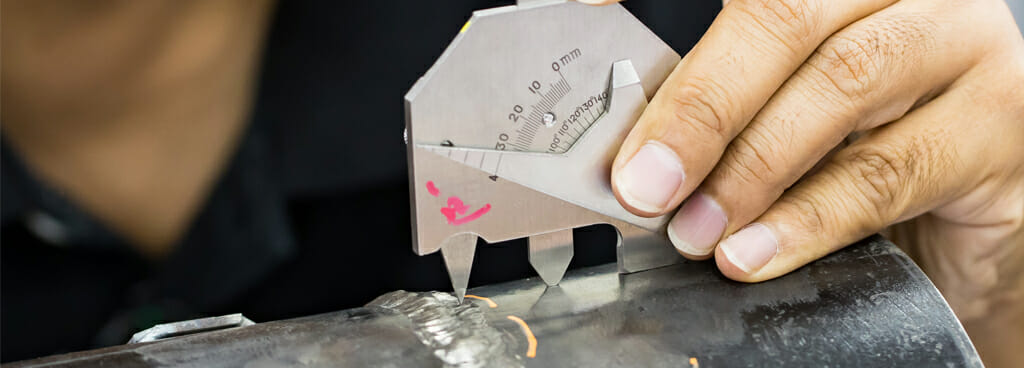Understanding the Principles of Welding Examination to Make Certain Top Quality and Security
In the realm of modern engineering, welding examination stands as a keystone for making sure both the high quality and safety of architectural productions. The process involves a thorough evaluation of welded joints, employing innovative methods such as ultrasonic and radiographic testing to identify concealed flaws. The competence of certified assessors is vital, as they connect the gap in between theoretical criteria and functional application. Their role expands beyond plain detection, encompassing the paperwork and communication of searchings for to relevant stakeholders. What are the nuances of these evaluation approaches that make them important for maintaining structural honesty?

Significance of Welding Assessment
In the world of commercial manufacture, the importance of welding evaluation can not be overstated. Welding evaluation plays an important duty in making certain the integrity, safety, and longevity of welded structures. Given the diverse applications of welding in industries such as construction, automobile, aerospace, and shipbuilding, the requirement for strict quality assurance steps is critical. Appropriate evaluation guarantees that welds meet specified standards and codes, which is crucial for preventing architectural failings that might result in devastating consequences.
The procedure of welding naturally involves complex variables, consisting of temperature, material homes, and environmental conditions, every one of which can influence the top quality of the weld. A complete evaluation identifies issues such as fractures, porosity, and insufficient combination, which can compromise the stamina and reliability of the weld. By detecting these problems early, corrective activities can be taken, thereby lowering the danger of failing and connected prices.
Furthermore, welding examination adds to governing compliance, as several markets are controlled by stringent safety and security requirements and standards. Failure to comply with these laws can lead to lawful liabilities and punitive damages. Inevitably, welding inspection not only safeguards physical frameworks yet also supports and safeguards human lives sector reputations.

Trick Welding Examination Methods
Although welding assessment is essential to ensuring the quality and security of bonded frameworks, it is the specific approaches used that establish the effectiveness of the inspection process. Key welding inspection methods can be broadly categorized into non-destructive screening (NDT) and devastating screening. Non-destructive screening approaches such as aesthetic assessment, ultrasonic screening, radiographic testing, magnetic particle testing, and liquid penetrant screening are largely made use of to examine the buildings of a weld without creating damages. Visual evaluation is frequently the first action, entailing a detailed assessment of the weld's surface for problems like cracks or porosity.
Ultrasonic and radiographic screening are advanced strategies that enable inspectors to examine the internal honesty of the weld. Ultrasonic testing makes use of high-frequency sound waves to identify interruptions, while radiographic testing utilizes X-rays or gamma rays to produce a photo of the weld's interior. Magnetic bit testing and liquid penetrant screening are surface examination techniques made use of to find surface area and near-surface defects. On the other hand, harmful testing methods entail physically breaking or cutting the weld to evaluate its mechanical buildings. These detailed examination techniques guarantee that welds satisfy industry requirements and safety requirements, therefore guaranteeing architectural integrity and performance.
Duty of Qualified Inspectors
Licensed inspectors play a pivotal role in the welding evaluation process, guaranteeing that all welds follow rigorous market standards and security laws. Their expertise is important in identifying issues or irregularities that may compromise the architectural stability of a weld. By diligently analyzing each weld, licensed examiners assist stop possible failings that can result in costly repair work or dangerous mishaps.
To come to be licensed, assessors have to go through rigorous training and screening, which acquaints them with numerous welding strategies, products, and testing methods. This thorough expertise permits them to evaluate weld top quality effectively and make informed judgments about their safety and security and dependability. Additionally, certified assessors excel in interpreting plans and specs, making certain that the welding job straightens with the task's layout needs.
An integral component of their duty is to document their findings thoroughly, supplying a thorough document of the assessment process. This documents is crucial for traceability and liability, serving as an official record of conformity with market requirements. Certified inspectors likewise play an essential role in assisting in interaction in between job stakeholders, providing suggestions and understandings to enhance welding practices and end results. Their payment is crucial in preserving high levels of quality and safety and security in welding procedures.

Tools Made Use Of in Welding Inspection
Welding examiners rely on a selection of specialized devices to execute their duties efficiently, making sure each weld fulfills the required criteria. Amongst these devices, visual evaluation aids like multiplying glasses and mirrors are fundamental, enabling examiners to very closely check out welds for surface flaws such as fractures, porosity, and undercut. Calipers and fillet weld evaluates are vital for determining weld dimensions to confirm conformity with style requirements.
Advanced tools prolong beyond visual help, consisting of non-destructive screening (NDT) equipment. Ultrasonic testing devices are essential in identifying subsurface flaws, utilizing audio waves to reveal interior gaps without endangering the weld's integrity. Likewise, radiographic screening uses X-rays or gamma rays to catch you could try here photos of a weld's inside, highlighting prospective flaws.
Magnetic particle testing is an additional essential device, especially for finding surface area and near-surface interruptions in ferromagnetic products. By using magnetic areas and ferrous fragments, inspectors can identify imperfections that may or else be invisible.
Dye penetrant evaluation is often made use of for non-ferrous materials, providing a contrast-enhanced visual look for surface-breaking flaws. Welding Inspection Madison. Together, these tools enable welding examiners to comprehensively evaluate weld top quality, guaranteeing security and reliability in numerous applications across markets
Making Certain Architectural Stability

Welding treatments must adhere to established criteria and my sources codes, such as those defined by the American Welding Culture (AWS) or the International Organization for Standardization (ISO) These standards ensure that the welds can hold up against functional tensions and environmental elements. Certified and licensed welders play a crucial role in this process, as their proficiency makes certain that methods are applied correctly, lessening defects such as fractures, porosity, and insufficient combination.
Post-weld examination is another important element of confirming architectural stability. These examinations confirm that the welds fulfill the called for quality standards, providing assurance of their resilience and dependability.
Final Thought
The fundamentals of welding assessment are important for keeping the high quality and safety of welded structures. The usage of specialized devices additionally enhances the assessment procedure, eventually guarding human lives and extending the life-span of welded building and constructions.
Welding evaluation plays an essential function in making certain the integrity, security, and longevity of welded frameworks.Although welding inspection is vital to making certain the high quality and security of bonded structures, it is the certain approaches employed that figure out the performance of the inspection process. Secret welding examination methods can be extensively categorized right into non-destructive screening (NDT) and harmful testing.Certified examiners play a crucial role in the welding evaluation process, making certain that all welds comply with stringent market requirements and security laws.The principles of welding inspection are vital for preserving the high quality and security of bonded frameworks.